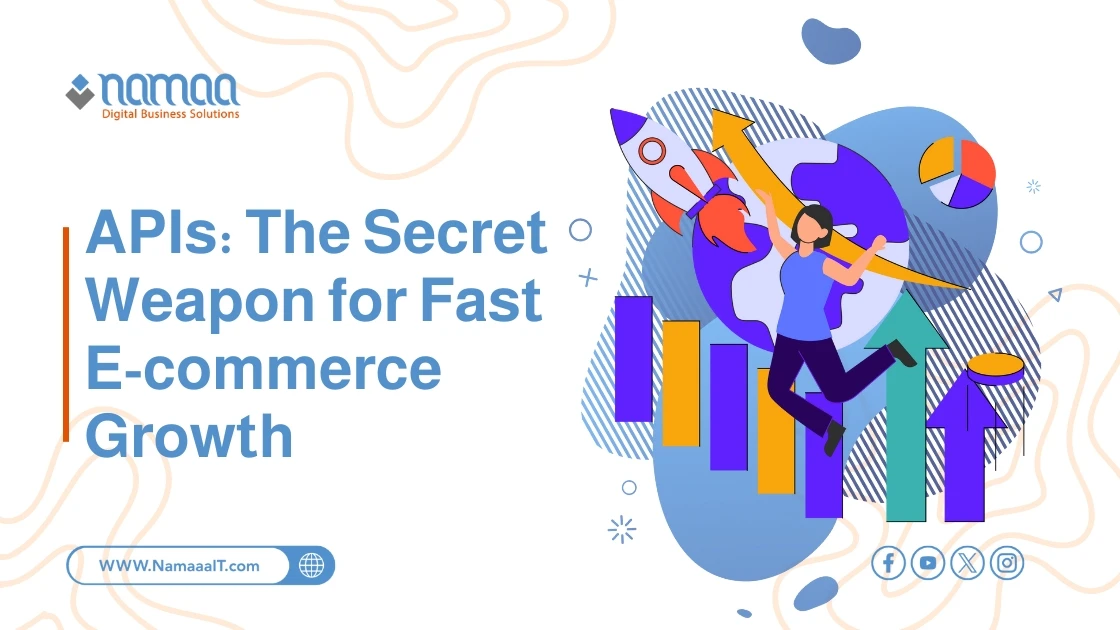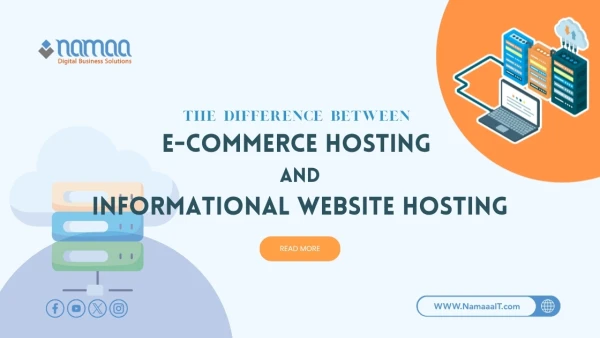In the fast-paced and ever-changing world of e-commerce, having a good product or a stylish website is no longer enough. The real secret behind fast-growing brands that outperform competitors lies in the technical infrastructure behind the scenes — specifically, in Application Programming Interfaces (APIs). These interfaces aren’t just tools for developers; they are the bridges that connect systems, accelerate processes, and enable businesses to scale intelligently and flexibly. In this article, we’ll explore how APIs have become a major driver of e-commerce growth and why every ambitious brand should place them at the heart of its digital strategy.
What Are APIs and Why Are They Essential for Modern E-Commerce?
Application Programming Interfaces, or APIs, are sets of rules and definitions that allow different applications to communicate with each other. Think of them as digital translators that enable systems to interact without direct human intervention. In the context of e-commerce, APIs act as the backbone connecting all the technical parts that make up the customer experience — from product and inventory management to payment, shipping, analytics, and artificial intelligence. Without APIs, these systems remain disconnected, resulting in a slow and inflexible user experience.
The importance of APIs goes beyond just the technical side — they directly impact operational efficiency. APIs enable quick integration with third-party platforms like payment gateways, delivery services, and email marketing tools, which reduces development time and operational costs. For example, an e-commerce store can use a payment service API such as Stripe or PayPal instead of building a custom payment system from scratch. This speeds up service deployment and improves responsiveness to market needs.
Additionally, APIs support agile development methodologies and empower businesses to scale faster. The easier it is for a store to integrate new functionalities, the more adaptable it becomes to changes in consumer behavior and technology. Thus, APIs are not just technical tools, but strategic elements for modern e-commerce success.
How Do APIs Enhance Customer Experience and Increase Sales?
Success in e-commerce is not just about offering great products or attractive deals. It’s primarily about delivering a seamless, integrated customer experience. APIs play a central role in improving every aspect of the user journey. For example, when a customer browses products in an online store, APIs responsible for fetching real-time product data and availability help ensure that accurate, up-to-date information is displayed, minimizing frustration caused by incorrect stock or pricing.
Moreover, APIs enable AI tools and recommendation engines to analyze user behavior and deliver personalized suggestions — increasing the likelihood of purchase and boosting average order value. Payment and shipping APIs also streamline the buying process by offering fast and flexible options, reducing cart abandonment rates.
From a marketing perspective, APIs allow integration with tracking and analytics tools like Google Analytics and Facebook Pixel, helping marketing teams understand customer behavior and make data-driven decisions. This directly improves campaign efficiency and return on investment.
In short, the smarter the use of APIs, the better the customer experience, the higher the sales potential, and the stronger the brand loyalty. That’s why leading brands treat APIs not as a technical option but as a strategic growth engine.
Discover: Automating Customer Service Using Chatbots
Core API Types in E-Commerce
In the world of e-commerce, API types vary according to the functions they serve, and each plays a critical role in ensuring efficient store operations. Common types include:
- Product and Inventory Management APIs: Used to update product details, track available quantities, and manage product categories. These APIs allow real-time and accurate product data display, preventing overselling and reducing logistical errors.
- Cart and Order APIs: Manage shopping carts and order processing. They allow users to add items, modify quantities, and complete purchases easily. They also facilitate order tracking after purchase, enhancing customer trust.
- Payment Gateway APIs: Among the most important APIs, enabling integration with payment systems like Stripe, PayPal, Apple Pay, and others. They provide a smooth, secure checkout experience with multiple payment options.
- Shipping and Delivery APIs: Used to offer various shipping methods, track shipments, and calculate delivery costs based on location and weight. Integration with companies like DHL or Aramex makes operations more transparent and efficient.
- Customer Service and Support APIs: Integrate with platforms like Zendesk or Freshdesk to give support teams quick access to customer data and enable faster problem resolution.
- Analytics and Marketing APIs: Analyze visitor behavior, measure marketing performance, and improve ad campaigns based on real data.
All these APIs work together to create a flexible and responsive e-commerce ecosystem. Investing in these tools directly improves service quality and customer satisfaction.
read more: Google Shopping Ads vs. Meta vs. TikTok: Which Achieves the Best Conversion Rate in 2025?
How APIs Enable Fast Multi-Channel Expansion for E-Commerce Stores
In today’s digital world, online stores are no longer limited to websites alone. There’s a growing need to be present across multiple channels — including mobile apps, social media, external marketplaces (like Amazon and Noon), and even smart chatbots. Here, APIs are the key enablers for seamless, intelligent, and scalable multi-channel expansion.
APIs allow the store’s core systems to connect flexibly with various channels. For instance, a store can use APIs to automatically sync its product catalog with Amazon or Facebook Shop, maintaining real-time updates in inventory and pricing. This minimizes manual work and errors, ensuring a consistent customer experience across all platforms.
Additionally, APIs enable fast development of mobile apps or kiosks without starting from scratch. With robust and reliable APIs, developers can build new interfaces quickly — reducing time-to-market and development costs.
APIs also support omnichannel commerce by providing unified customer data. This means a customer can start a purchase on a mobile app, continue on the website, and complete the transaction through an automated WhatsApp message. This consistent experience builds customer loyalty and increases engagement and sales.
With analytics APIs, businesses can measure performance across channels and adjust strategies accordingly. Companies adopting an API-first infrastructure become more agile in scaling, entering new markets, and adapting to market trends.
Are APIs Suitable for Small Businesses? How to Start with a Limited Budget?
Although APIs might sound technical and complex, they’re not just for big corporations with large budgets. Small and medium-sized businesses can also leverage APIs to improve efficiency, enhance customer experience, and even scale — all within a limited budget. The key point is that APIs don’t always require complex and costly infrastructure; they can be implemented using widely available free or low-cost solutions.
To start using APIs on a budget:
- Identify repetitive tasks or error-prone processes such as order management, inventory tracking, or customer communication.
- Look for services that offer APIs related to these tasks, ideally with free or low-cost plans.
- Work with a freelance developer if customization or specific integration is needed — instead of hiring a full-time team.
Most importantly, APIs help set small businesses on a path of sustainable growth. Each process improved or automated with an API means more time to focus on sales and development instead of manual operations. Over time, this scalable foundation becomes a key advantage in competing with bigger players.
Case Studies: How Major Brands Used APIs for Significant Growth
In the fast-paced world of e-commerce, APIs are a critical factor in driving growth and excellence. Case studies from major brands like ASICS and Hepsiburada show how APIs can transform operations and boost performance:
- ASICS: Accelerating Digital Growth with MuleSoft
ASICS, the sportswear and footwear brand, faced challenges unifying its digital systems across different brands and regions. By using MuleSoft's Anypoint platform, ASICS built a global e-commerce platform in just six months. APIs connected order, inventory, and payment systems — enhancing customer experience and accelerating development by 2.5x. The reusable components also saved time and resources as the platform expanded to other brands. - Hepsiburada: Managing 500 Microservices Efficiently with KrakenD
As Turkey’s largest e-commerce platform, Hepsiburada handles over 150 million monthly visits and offers more than 50 million products. To manage the technical challenges of operating 500 microservices across 40 development teams, the company adopted the KrakenD API gateway. This simplified microservice management, improved performance, and reduced operational complexity — allowing teams to focus on building features instead of solving technical issues.
FAQs
1. Can APIs be used to enhance security in e-commerce stores?
Yes, APIs for authentication and identity verification — like OAuth or JWT — can protect user accounts and prevent unauthorized access.
2. How Do APIs Help Reduce Human Error in Daily Operations?
Thanks to automation and system integration, the need for manual data entry is reduced, which decreases errors and increases the accuracy of orders and reports.
3. What Role Do APIs Play in Supporting Customer Service?
APIs enable support systems such as chatbots and automated emails to pull customer and order data in real-time, speeding up issue resolution and delivering a faster support experience.
4. Are There Risks in Fully Relying on APIs?
Yes, if APIs are not managed properly — in terms of security, permissions, and documentation — they may be vulnerable to security breaches or cause service outages.
5. Can APIs Help Connect Online Stores to Physical Warehouses?
Absolutely. APIs can link point-of-sale (POS) systems and physical warehouse software to synchronize inventory and update sales data between branches and the online store in real time.
Summary
✅ Application Programming Interfaces (APIs) help reduce the time needed to develop new features by up to 60%, giving online stores greater agility to respond to market demands.
✅ API-driven customer experiences can lead to a 20–30% increase in conversion rates by personalizing content and simplifying the purchase process.
✅ Over 83% of digital companies rely on APIs to seamlessly integrate payment, shipping, and order management services.
✅ Companies that adopt an API-first architecture launch new products 2.5 times faster than those using traditional systems.
✅ More than 75% of businesses using omnichannel APIs have seen improvements in customer loyalty and increases in average order value.









